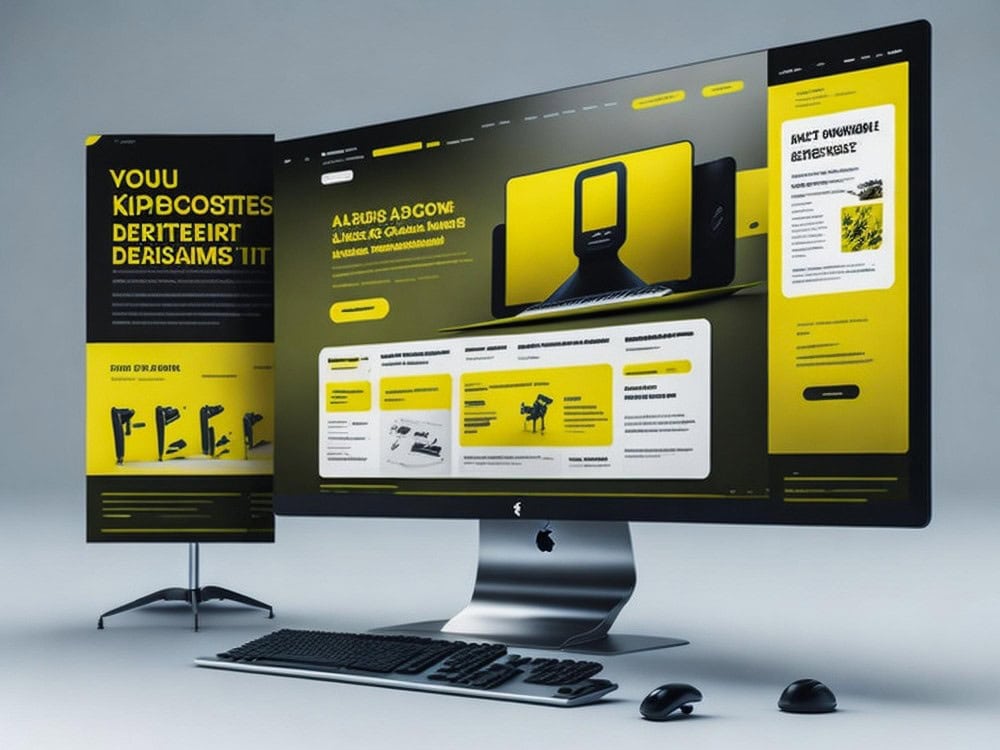
In today’s digital marketplace, a website’s user experience (UX) is more than just a design consideration; it’s a pivotal factor in turning casual visitors into loyal customers. A well-designed website can act as a powerful sales machine, seamlessly guiding users towards making a purchase. This post explores essential UX tips that can transform your website into an effective revenue generator.
Understanding the User
The cornerstone of any successful UX strategy is a deep understanding of your audience. Every element on your website, from content to layout, should be tailored to meet the needs and preferences of your target demographic. Utilizing tools like Google Analytics can provide invaluable insights into user behavior, such as the most visited pages, the typical journey through your site, and where you might be losing potential customers. Conducting user surveys and feedback sessions can also offer a direct line to understanding what your visitors want and how they feel about your website’s current design.
Navigation and Structure
A website’s navigation should be intuitive and straightforward. Users should find what they’re looking for in just a few clicks. Organize the structure of your website logically—group similar information together, use clear and descriptive headings, and ensure that your menu is easy to access across all pages. Dropdowns should be used sparingly; although they save space, they can complicate the navigation process if overused. A good rule of thumb is to ensure that all important content is accessible within three clicks from the homepage.
Speed and Performance
Website performance is a critical component of UX that directly impacts sales. Slow-loading pages can frustrate users and lead to a higher bounce rate. Optimizing image sizes, leveraging browser caching, and reducing server response time are effective strategies to enhance site speed. Tools like Google PageSpeed Insights can analyze your website and offer specific recommendations to improve its performance. Remember, a fast site retains users longer, providing more opportunities to convert their interest into sales.

Visual Appeal
The aesthetic design of your website not only needs to attract attention but also keep users engaged. A harmonious color scheme, consistent typography, and high-quality images create an appealing environment that invites exploration. The visual layout should align with your brand’s identity and values, making your website a reflection of your business’s professionalism and attention to detail. When users see a site that looks modern and well-maintained, they are more likely to trust its content and functionality.
Content is King
Engaging content is the backbone of effective UX. It attracts search engines and keeps visitors coming back. Every piece of content, from detailed product descriptions to informative blog posts, should be crafted with your audience in mind. Use language that resonates with your users, and provide clear, concise information that adds value. Additionally, optimizing your content for SEO with targeted keywords can help improve your site’s visibility and draw in more organic traffic.
Call to Action (CTA)
A well-crafted CTA is crucial for guiding users toward conversion. Whether it’s signing up for a newsletter, making a purchase, or contacting your business, your CTAs should be clear and compelling. Use action-oriented language that incites enthusiasm or urgency, like “Buy Now to Save 20%” or “Register Free for a Limited Time”. Place them strategically throughout your website, especially on pages where users are most engaged. Experiment with colors and designs that stand out but still fit within your overall aesthetic. The goal is to make it as easy and tempting as possible for users to take the next step.
Mobile Optimization
With the increasing prevalence of smartphones, having a mobile-optimized website is no longer optional. A responsive design that adjusts seamlessly across devices is critical to providing a good user experience. Ensure that buttons are easy to tap, text is readable without zooming, and navigation is simplified for smaller screens. Google’s Mobile-Friendly Test can help you identify areas of your site that may need improvement for better mobile performance. Remember, a mobile-friendly website not only enhances usability but also improves your site’s SEO, as search engines favor mobile-optimized sites in their rankings.

Trust and Credibility
Trust is a significant factor in a user’s decision to engage with a website. Include elements that enhance credibility such as security badges, SSL certificates, and transparent privacy policies. Display testimonials, reviews, and case studies prominently to demonstrate social proof and the reliability of your products or services. Ensure that your contact information is easy to find and consider adding a live chat feature to provide immediate assistance. These elements reassure users of your legitimacy and can dramatically increase their likelihood to make a purchase.
Continuous Improvement
The digital landscape is constantly evolving, and so should your website. Regularly testing and updating your UX strategies based on user feedback and analytics is vital. Employ A/B testing to compare different versions of a page or feature to determine which performs better. Utilize usability testing tools to gather insights into how real users interact with your website. This ongoing process helps you refine your user experience, keeping it optimized for sales conversion.
Conclusion
Transforming your website into a sales machine requires a comprehensive approach to user experience. From understanding your audience and enhancing navigation to optimizing for mobile and building trust, every aspect plays a crucial role in attracting and retaining customers. Implement these tips to create a more engaging, effective, and user-friendly website. Encourage continuous improvement through regular testing and adaptation to new trends and user expectations. With these strategies in action, you’re well on your way to maximizing your website’s sales potential.





